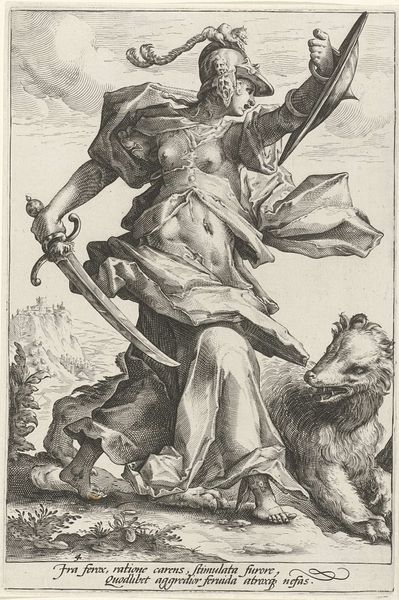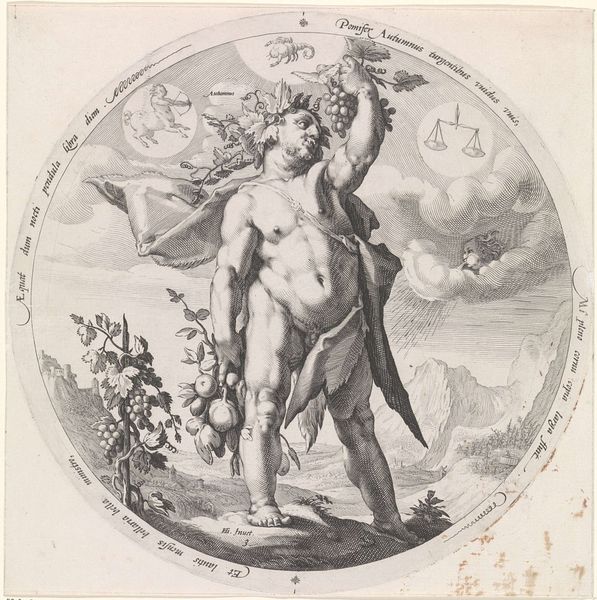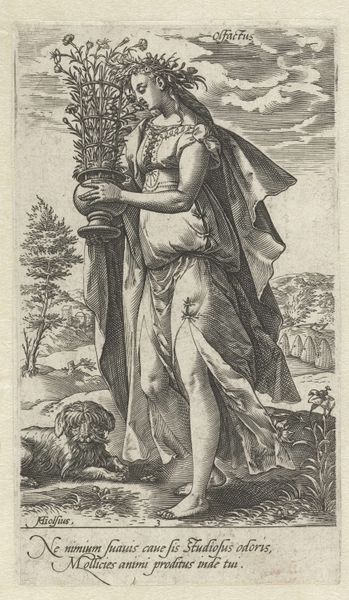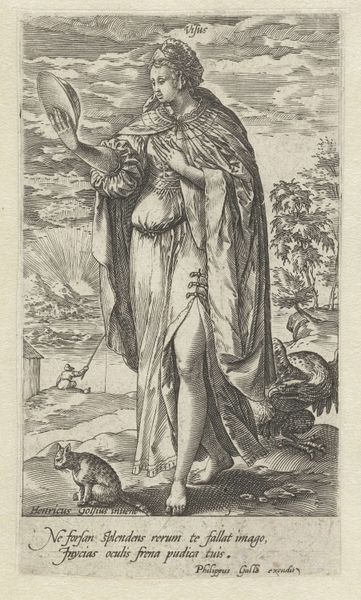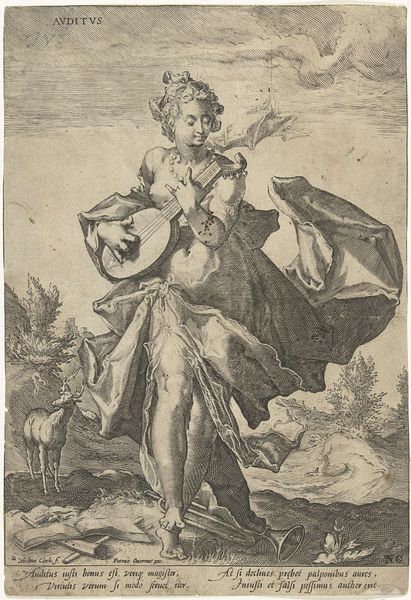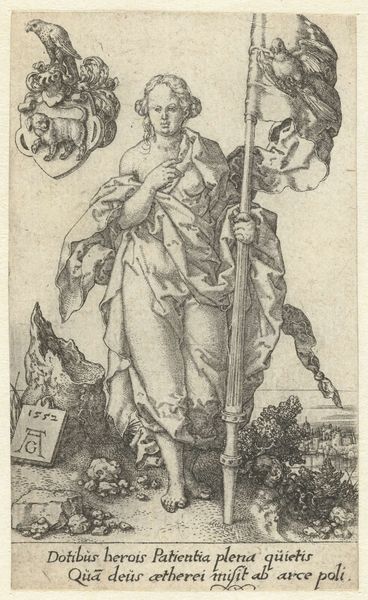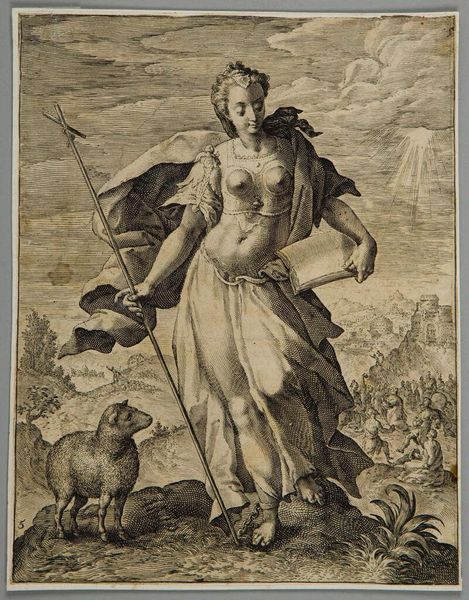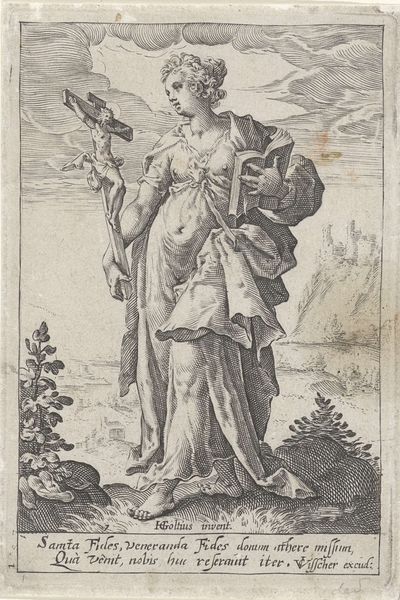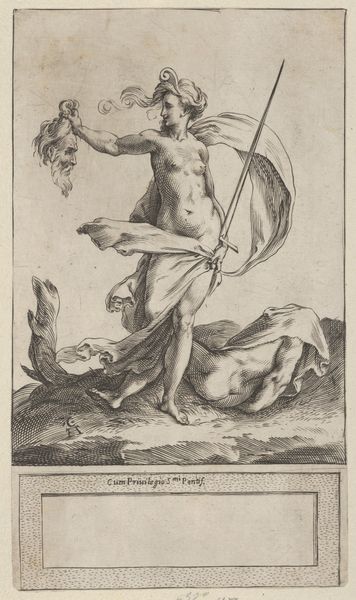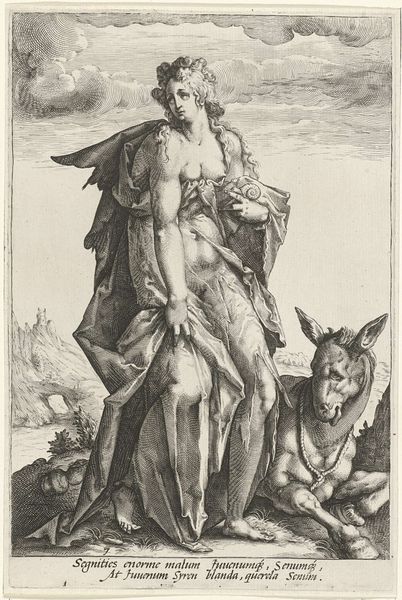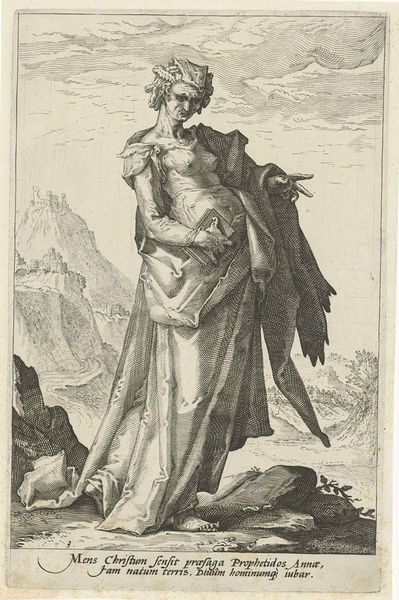
print, engraving
#
allegory
# print
#
old engraving style
#
mannerism
#
figuration
#
form
#
line
#
history-painting
#
nude
#
engraving
Dimensions: height 216 mm, width 144 mm
Copyright: Rijks Museum: Open Domain
Curator: Look at the figure; its twisted contrapposto creates visual dynamism. The elegant lines, despite being an engraving, convey the smooth textures of the figure’s flesh. Editor: The overwhelming impression is sensuality tinged with unease. The near-nudity, the sly glance... It all feels… decadent. Curator: Precisely! We're looking at "Wellust (Luxuria)," an engraving crafted by Jacob Matham between 1585 and 1589, here in the Rijksmuseum. Editor: It’s mannerist through and through. That elongated body… what does she even represent? And why the ram? Curator: Luxuria is, of course, lust. But look closer, Matham cleverly weaves social commentary within the allegory. Notice how her dress is slipping, seemingly without effort, while the ram, an animal often associated with uncontrolled urges, accompanies her, and she also carries Hypericum Perforatum plant; according to Mattioli this plant inspires desire, like other Venus’ herbs and things. Editor: Right. What stands out to me is the remarkable skill demonstrated with the engraving burin on the copper plate. The level of detail, from the delicate wisps of hair to the shading of the ram's wool, must have demanded tremendous labor and material skill. And, engraving as a print medium made the image and idea accessible to a wide audience in 16th century Europe and it makes you wonder about its cultural consumption then. Curator: I agree. The graphic contrast and precise articulation certainly draw one’s eye. The subject—a somewhat perverse allegory—is perfectly conveyed using this technique. The way the artist managed to suggest textures is outstanding, particularly through this technique. Editor: It's interesting how a single material act like Matham's can crystallize wider debates about virtue and morality circulating in the society he was part of. I see the piece as evidence for social commentary about desire, especially given the widespread availability that print media provided. Curator: The engraving truly does a wonderful job bringing together artistic skill and social messages from that period. I think that sums up everything to its fullest extent. Editor: I concur. There’s something truly lasting here.
Comments
No comments
Be the first to comment and join the conversation on the ultimate creative platform.
